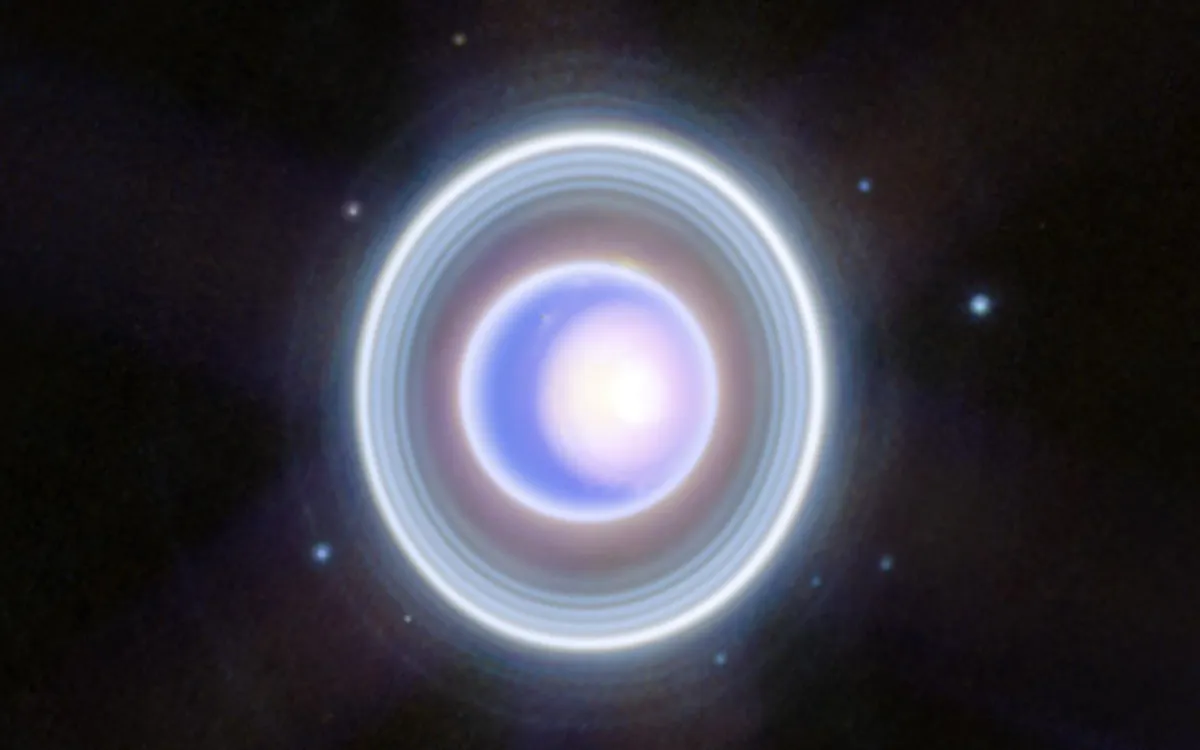
In April 2025, a remarkable celestial alignment provided NASA scientists with an unprecedented opportunity to study Uranus in exceptional detail. This rare event, known as a stellar occultation, occurred when Uranus passed directly in front of a distant star, creating a spectacular cosmic phenomenon observable only from parts of western North America. The alignment enabled researchers to measure changes in Uranus’ atmosphere, offering insights that have not been explored so thoroughly in decades.
On April 7, 2025, Uranus traversed the space between Earth and a distant star, resulting in a stellar occultation. For scientists at NASA, this event was far more than just a beautiful sight in the night sky; it was a golden opportunity to delve deep into the mysteries of the ice giant. By closely monitoring how the star's light dimmed and brightened as it was obscured by Uranus, researchers could obtain critical measurements regarding the planet’s atmosphere, including temperature, pressure, and density, all in remarkable detail.
This phenomenon created a light curve, a powerful tool that helps scientists unlock secrets hidden within Uranus' atmosphere. William Saunders, a planetary scientist at NASA’s Langley Research Center, explained that as Uranus began to occult the star, the planet’s atmosphere refracted the starlight, causing a gradual dimming before the star was completely blocked. The reverse occurred at the end of the occultation, allowing scientists to measure various atmospheric properties at multiple altitude layers.
“We are able to measure the light curve and determine Uranus’ atmospheric properties at many altitude layers,” Saunders stated. This detailed data from the planet’s stratosphere will enhance our understanding of Uranus’ climate, revealing how it has evolved over the decades and what future missions to this distant icy world might encounter.
The stellar occultation lasted approximately an hour and was only visible from Western North America. To capture this rare event, NASA Langley led an international team of over 30 astronomers who utilized 18 professional observatories. “This was the first time we have collaborated on this scale for an occultation,” noted Saunders. The observations gathered will help NASA determine how energy circulates within Uranus’ atmosphere and what phenomena contribute to the inexplicably hot upper layers. Other researchers will analyze the data to study Uranus’ rings, atmospheric turbulence, and its precise orbit around the Sun.
Understanding the exact location and orbit of Uranus is not straightforward. Since NASA's Voyager 2 spacecraft flew past the planet in 1986, there has been a lack of close-up observations. The last bright stellar occultation occurred in 1996, and currently, Uranus’ position is only accurate to within about 100 miles. The new atmospheric data collected during the occultation is essential for future NASA explorations of this ice giant.
Emma Dahl, a postdoctoral scholar at Caltech, played a pivotal role in gathering observations from NASA’s Infrared Telescope Facility (IRTF), located on the summit of Mauna Kea in Hawaii. This facility was initially built to support NASA’s Voyager missions. “As scientists, we do our best work when we collaborate. This was a team effort between NASA scientists, academic researchers, and amateur astronomers,” Dahl remarked.
Uranus, along with other gas and ice giants like Jupiter and Saturn, provides unique insights into atmospheric dynamics. The absence of a solid surface allows researchers to study cloud formation, storms, and wind patterns without the complications posed by a solid ground.
In preparation for the April occultation, NASA Langley researchers conducted a test run on November 12, 2024. They coordinated two telescopes in Japan and one in Thailand to observe a dimmer Uranus stellar occultation visible only from Asia. This exercise allowed the team to refine their observational techniques and improved the predictions for the April event, enhancing the accuracy of Uranus' expected location during the occultation by 125 miles.
Uranus is situated nearly 2 billion miles from Earth and has an atmosphere primarily composed of hydrogen and helium. Unlike terrestrial planets, it does not have a solid surface but rather a soft composition of water, ammonia, and methane. This unique structure is why Uranus is classified as an ice giant, containing an abundance of swirling fluids with relatively low freezing points. While Saturn is renowned for its prominent rings, Uranus boasts 13 known rings comprised of ice and dust.
In the coming years, Uranus will occult several dimmer stars, and NASA aims to gather airborne and possibly space-based measurements during the next bright occultation in 2031. This future event is expected to involve an even brighter star than the one observed in April 2025, presenting another significant opportunity for scientists to study this distant icy world.